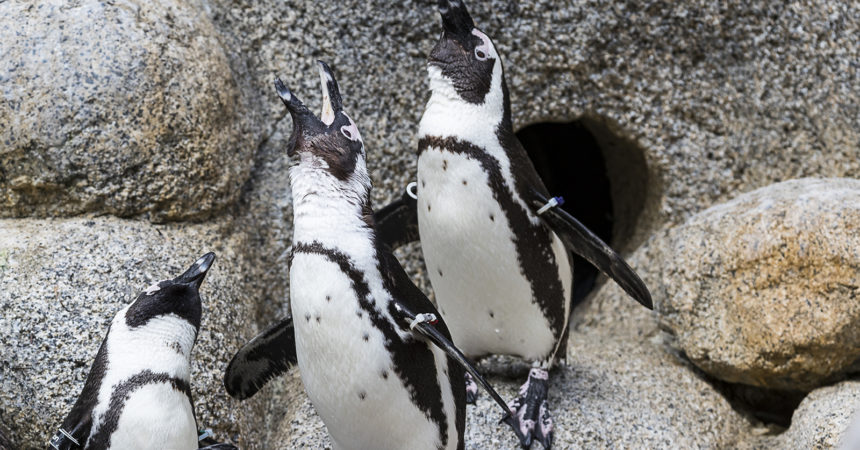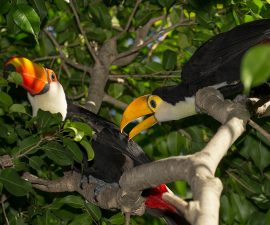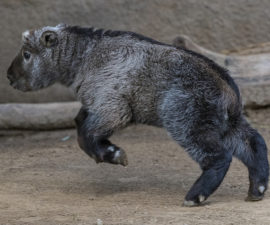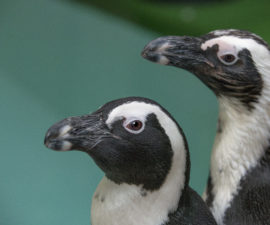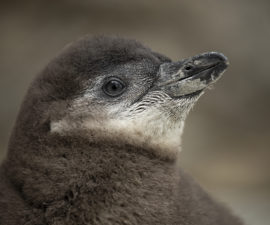April 25 is World Penguin Day, making it the perfect time to ponder these astonishing birds.
Why are penguins cool? Well, why wouldn’t they be? Let’s dive in and check it out.
There are 18 different species of penguins spread through the Southern hemisphere—from the equatorial waters of the Galápagos Islands all the way down to the coldest temperatures on the planet in Antarctica (where it has reached –127 degrees Fahrenheit).
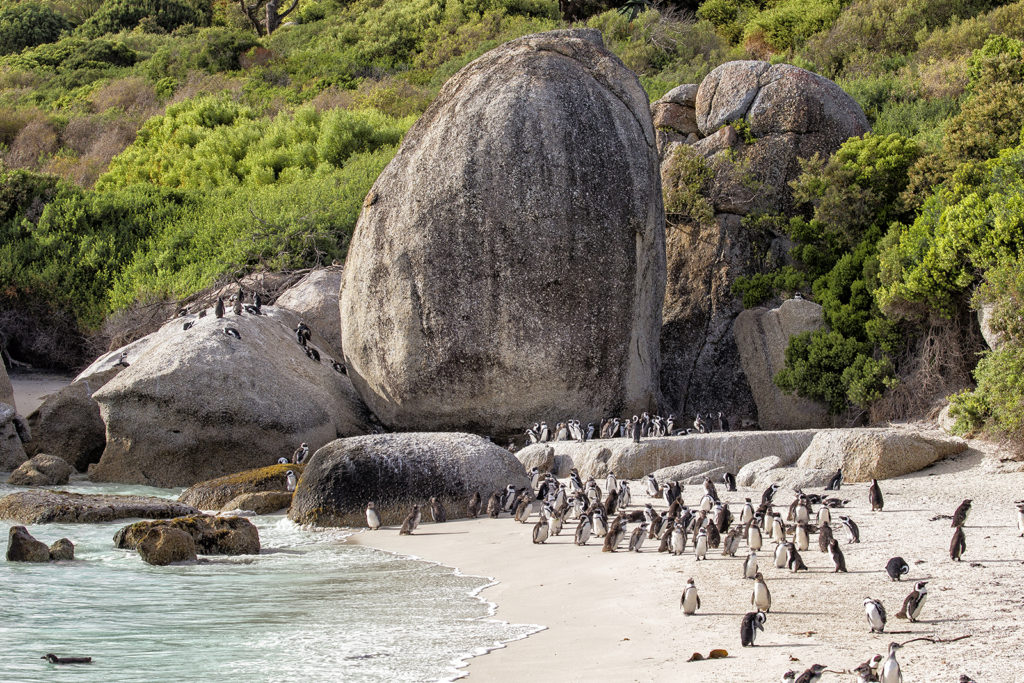
There are penguins in South America (the Humboldt and Magellanic); Africa (the African penguins that we have at the Zoo); Antarctica (the emperor, Adélie, and chinstrap); and among the sub-Antarctic islands (the king, gentoo, macaroni, rockhopper, and royal).
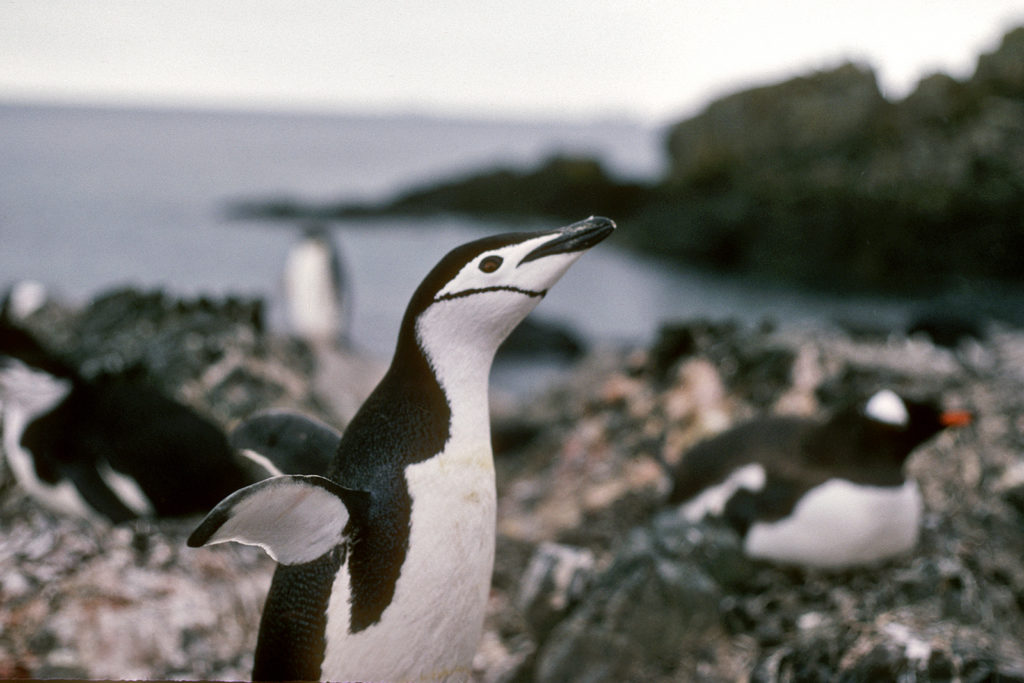
Surprisingly, the largest collection of different species is found in New Zealand and its surrounding seas (the little blue, yellow-eyed, Fiordland crested, erect crested, and Snares island penguins). In fact, the oldest penguin fossils were found in New Zealand, so that’s where penguins are thought to have originated. With so many different types of penguins, you’ll be surprised to know that just about the only thing they ALL have in common is that they are birds who are champion swimmers, and all of their meals come from the ocean!
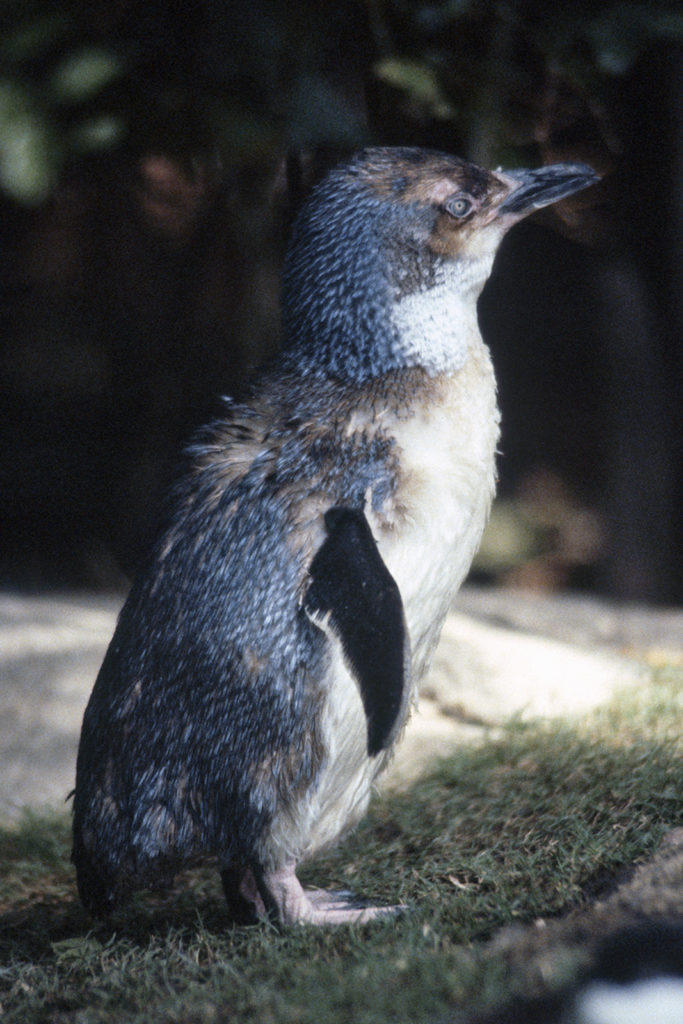
Penguins range in size from the 2-pound, little blue penguin to the emperor, weighing close to 90 pounds. Emperor penguins aren’t just huge, they’re pretty tough birds. Not only do they endure the cold darkness of the Antarctic winter while incubating their eggs for 2.5 months (after having waddled 60 miles to their breeding grounds), they do so without eating for nearly 90 days. If you’re not yet convinced of their superhero status, they’ve been recorded diving as deep as 1,774 feet and can hold their breath for 20 minutes; that’s deeper and longer than just about any marine mammal that’s been studied.
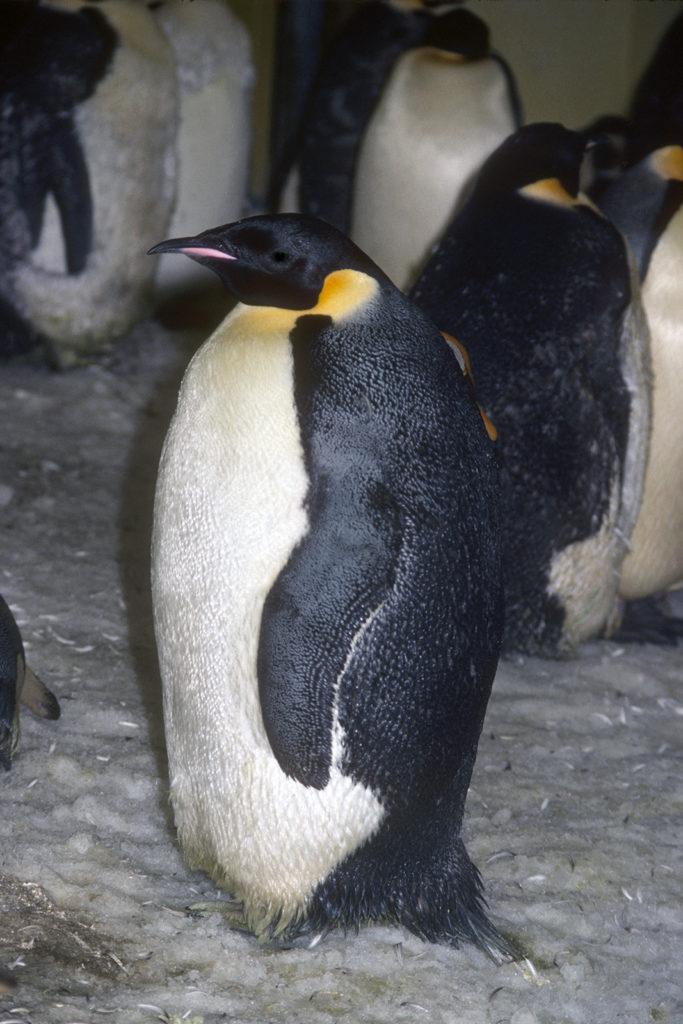
Penguins are colonial, which means they are more comfortable in very large groups. Some penguins might build their nest out of rocks, sticks, and bones close to many other nests in coastal areas. Other species build theirs near the sea by digging deep underground burrows with their feet. These burrows help them stay cooler during hot days and warmer at night. There are even penguins who don’t build nests at all! Emperor and king penguins lay a single egg and then scoop it on top of their feet, and incubate it there until it hatches. Then, they keep their chick on their warm feet and off the cold ground until it’s too big to fit anymore. In a fascinating twist, the yellow-eyed penguin swims up freshwater streams into the forest, to find a nesting area that is out of sight and hearing range of other penguin pairs.
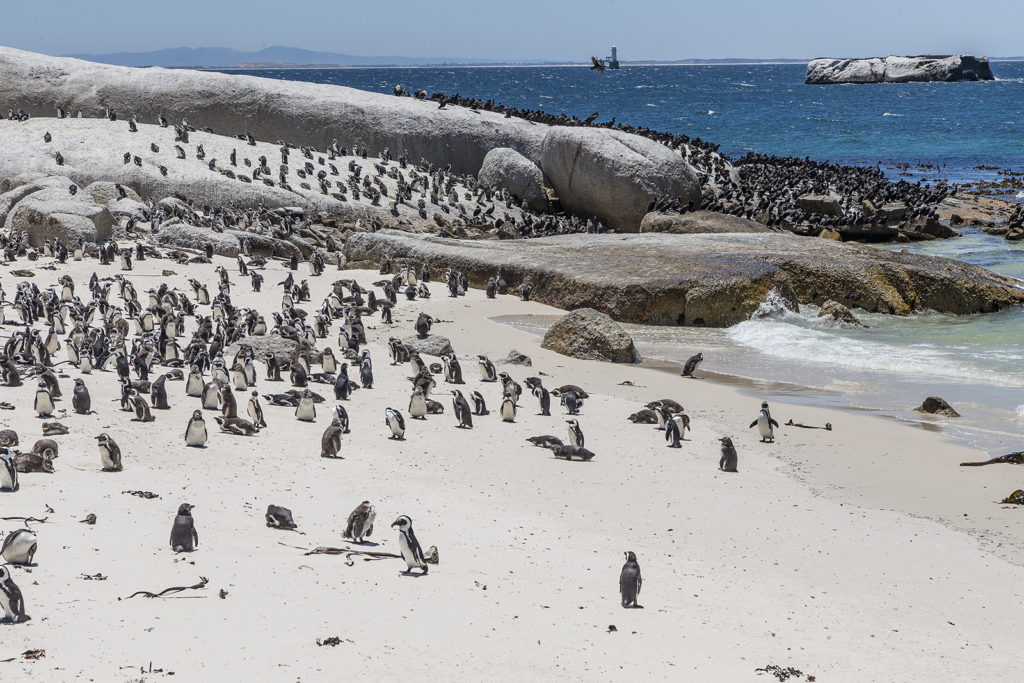
The only part of penguins that isn’t cool is their insulation—but it is in the slang sense! Like all birds, they are covered in feathers. But a penguin’s plumage is a unique arrangement of densely packed feathers, which acts like a dry suit to keep it warm in the frigid waters they swim in (even penguins that live in warmer land areas have to deal with cold seawater). The tightly packed feathers also provide a streamlined outer layer, helping to keep the birds hydrodynamic and able swim effortlessly at top speeds.
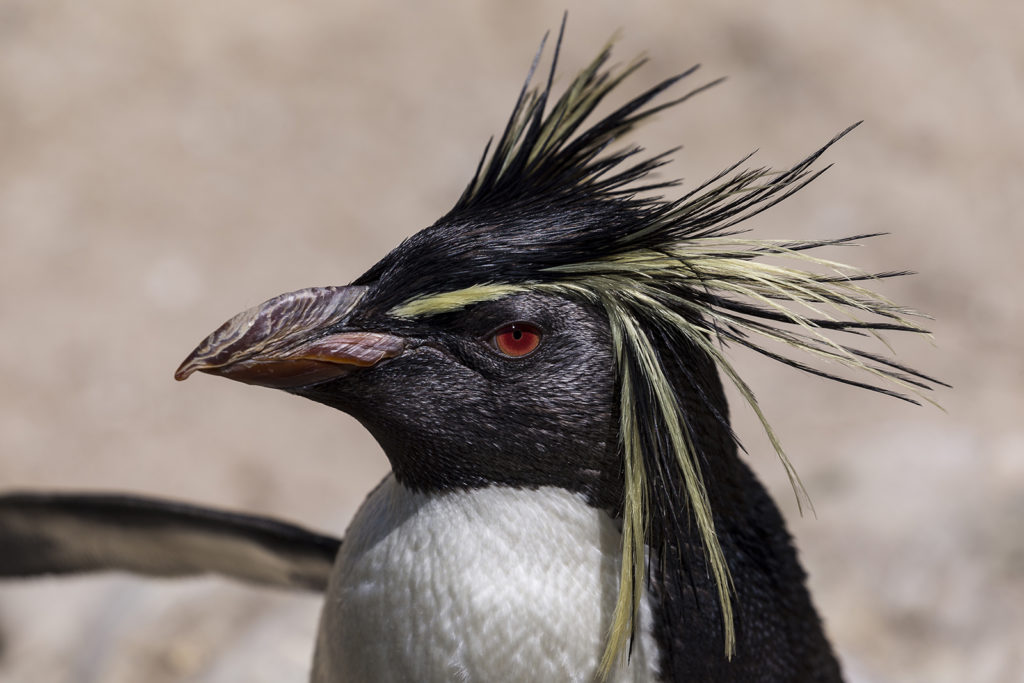
There is no other type of animal that is so widely spread across an enormous geographic range or displays so many unique characteristics among its members. So, yep, penguins are VERY cool!
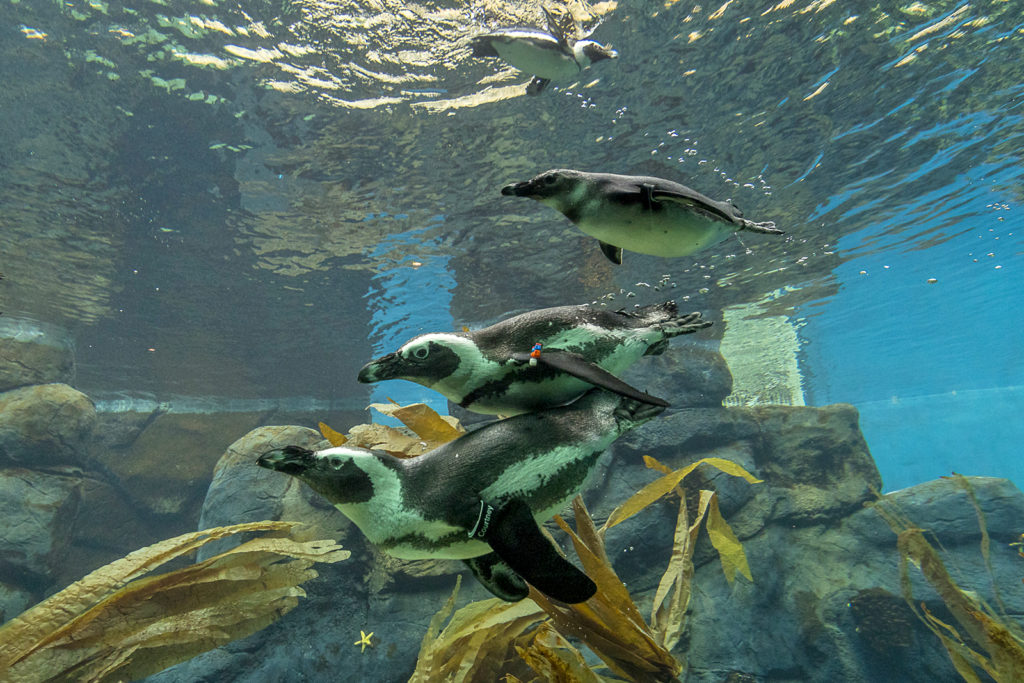
You’re probably wondering which are the coolest penguins. If you ask me (a penguin care specialist) it’s no contest—the African penguins at the San Diego Zoo take that title! This species inhabits the southern shores of South Africa. They enjoy our weather in San Diego, which is so similar to their native South Africa. And each member of our penguin colony has their own unique personality, whether it is sweet or saucy. Our penguins are definitely the coolest. But that may be my professional bias speaking—what’s your favorite penguin?
For even more penguin-icity, click over and check out our virtual World Penguin Day 2020 activities!
Debbie Denton is an animal care specialist at the San Diego Zoo. Read her previous blog, The Hatch of 2020.

